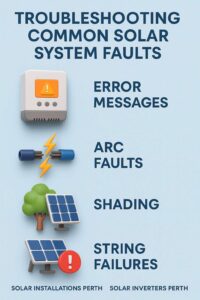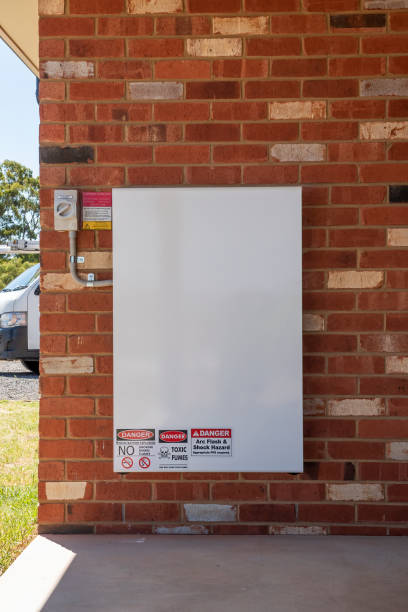Solar energy systems offer long-term cost savings and environmental benefits, but like any technology, they can develop faults that impact performance. Understanding the most common issues enables homeowners to address problems early, maintain efficiency, and avoid unnecessary downtime. This guide outlines key solar system faults—including error messages, arc faults, shading, and string failures—specifically for systems installed in Perth.
Understanding System Error Messages
Modern solar inverters feature diagnostic screens or online monitoring platforms that display error codes when something goes wrong. Common messages include grid faults, isolation faults, or overvoltage warnings. These indicators are not always cause for alarm but should not be ignored. Grid faults often relate to external power supply conditions, while isolation faults suggest a potential issue with electrical insulation—sometimes due to moisture ingress or cable degradation. Not all error codes require professional intervention, but consistent or recurring alerts may indicate deeper issues requiring inspection by a certified technician experienced with solar inverters Perth.
Identifying Arc Faults
Arc faults are high-risk events that occur when electrical current flows through damaged or deteriorated wiring, creating heat and potential fire hazards. These are less common but are taken seriously due to the safety implications. Inverter models with arc fault detection systems are now standard in many new solar installations Perth to shut down systems automatically when anomalies are detected. Visual signs such as burning smells, melted insulation, or unexpected system shutdowns are clear indicators. If suspected, power should be disconnected immediately, and a licensed solar electrician contacted to conduct an assessment.
Dealing with Shading Issues
Shading—even partial—can significantly reduce the performance of a solar system. A single shaded panel can impact the output of an entire string, depending on how the array is configured. Common causes include overgrown trees, new nearby structures, or even temporary obstructions like leaves or debris. Microinverters or power optimisers can help mitigate the effects by allowing each panel to operate independently. Homeowners should regularly check their panels for new or seasonal shading patterns and consider panel-level upgrades if energy yield losses persist. Addressing shading promptly is key to sustaining optimal energy generation.

String Failures and Performance Drops
A solar array is typically made up of multiple strings—groups of panels connected in series. If one panel in a string fails or performs below standard, it can drag down the output of the entire string. String failures can result from connector faults, damaged bypass diodes, or physical impact on the panels. Symptoms include noticeable drops in energy output or uneven performance across strings, as seen through monitoring systems. Technicians can run insulation resistance tests or use IV curve tracing to pinpoint the failing section, replacing only the affected components without requiring full system replacement.
Conclusion
While solar power systems are built for durability, issues such as error messages, arc faults, shading, and string failures can affect performance. Early detection and informed troubleshooting ensure continued efficiency and system longevity. Homeowners should monitor output regularly, respond to inverter alerts promptly, and schedule professional servicing when needed. With the right awareness and support, solar owners in Perth can maintain reliable, safe, and cost-effective systems for years to come.

